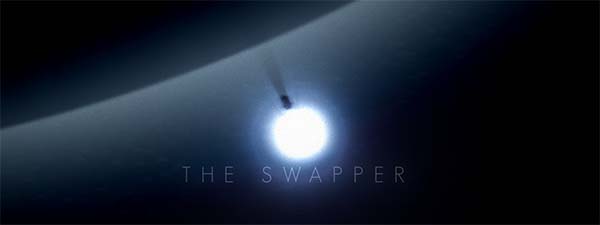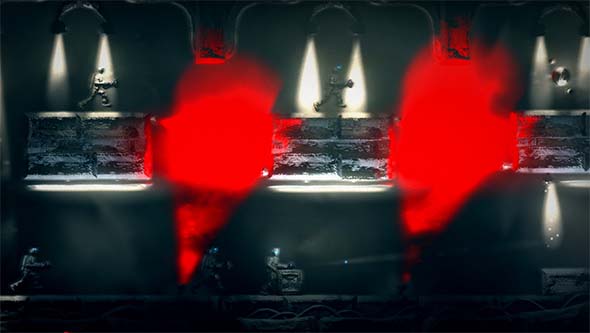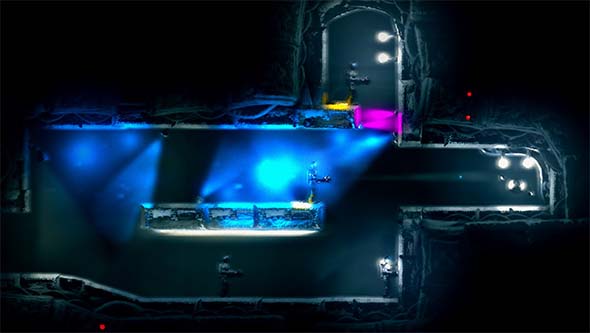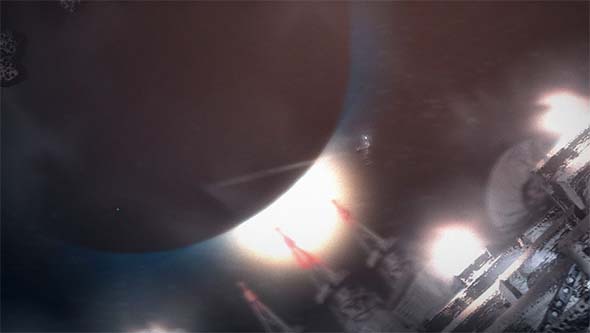
Since I have some extra time off for this holiday season, I'm trying to go through some of my backlog of shorter indie Steam games in between bouts of Cities: Skylines and Beyond Earth: Rising Tide. One such game is Facepalm Games' 2013's sci-fi indie hit, The Swapper, which I picked up in a Steam sale like a year ago. The game has also been ported to many consoles, including the PS3, PS4, Vita, XBox One, and Wii U, and the ports were developed by Curve Digital.
Making my clones do the deadly work
The Swapper seems to owe a lot to Valve's mega-hit Portal. Both games' central mechanics revolve around the player character using a futuristic non-weaponized gun (with 2 settings) to solve platforming puzzles and explore an environment. Portal is in full 3-D, whereas The Swapper is a more traditional 2-D side-scroller. The bigger difference however, is that the gun of The Swapper doesn't fire portable wormholes; instead, it allows the player character to instantly create clones of herself, and to swap her consciousness into one of the clones. Once created, these copies move in tandem with the copy that is currently being controlled by the player. The key to the puzzles is to maneuver yourself so that your clones can reach otherwise inaccessible areas or activate switches.

All your clones move in synchronization, making relative spacing very important for solving puzzles.
The space station is laid out in an unbelievable, but serviceable, series of puzzle rooms joined together by modest platforming sections. At first, the platforming between puzzles is interesting because it kept me thinking along the lines of solving puzzles rather than just moving from place to place. But there's a lot of exploration and backtracking, and having to navigate the corridors between puzzle rooms quickly became tedious once using the swapper gun became second nature and automatic. Fortunately, the game provides handy teleporters to allow you to quickly move to key sections of the station, so the backtracking never became as problematic as it could have been.
The puzzles themselves start off fairly simple, requiring that the player simply point the gun and clone herself in order to reach a platform or cross a gap and collect alien orbs that you use to unlock new areas of the space station. The challenge quickly escalates. Soon, obstacles start getting thrown at you, such as colored lights that prevent certain operations of the swapper gun, forcing you to have to find more elaborate ways around the lights in order to reach your destination. You have to start using careful positioning, choreographed movement, gravity, momentum, and inertia in order to successfully solve the puzzles. And all this escalation seems to happen naturally based on the increasing complexity of the levels, rather than through the introduction of new mechanics or controls.

About an hour into the game, I ran into a puzzle that took almost an hour of trial-and-error for me to solve.
About an hour into the game, the difficulty suddenly spiked, and I ran into one puzzle in particular that took me quite a while to figure out. I even had to leave it and come back to it later with a fresh perspective. I thought maybe I was missing some kind of upgrade or needed to learn some technique that the game hadn't tutorialized yet, but that wasn't the case. Eventually, I figured it out, and the solution seemed head-smacking obvious, but I probably spent a good hour on that one puzzle (approximately half of my time with the game, up to that point).
There are also some other sci-fi mechanics such as the occasional zero-g spacewalk, gravity inversion (allowing you to "fall" up and walk on the ceilings), and so on. These all flow fairly seamlessly into the game; although, I did feel that the gravity inversion felt a little unnecessary when it was introduced. After all, the game teaches you fairly early how to use the swapper gun to effectively fly by repeatedly swapping to clones created above you. This "flying", is, however, limited by the number of clones that you can create, and it's still subject to being blocked by colored lights. So gravity inversion felt superficial when introduced as a means of navigating the station. Once the gravity inversion was introduced into the puzzles, though, I recognized its value.

You'll also perform the occasional zero-G spacewalk or invert gravity.
Any problems that I had in solving a puzzle were purely intellectual. Every control and mechanic is intuitive and comfortable, movement is responsive, and I almost never struggled with making the character do what I wanted her to do. All in all, the game plays near-perfectly. The puzzles are appropriately challenging; although, the exploratory nature of the game means that difficulty can wobble back and forth a bit depending on which puzzle rooms you reach first...
[More]